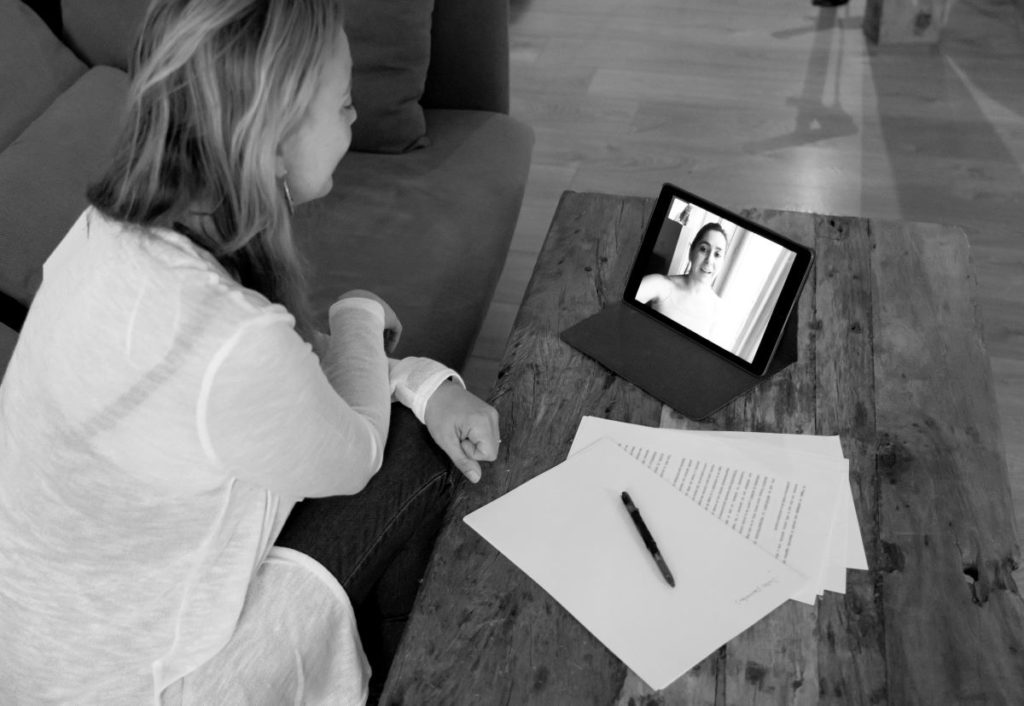Advantages of video conferencing and how to make it work for you

Client relationships are the foundation of your business. They are making the largest purchase of their lives and are trusting you to guide them through it. Your days are filled with meetings with clients, co-workers, and others in your industry. Then came 2020 and the world changed. Where you once thought nothing of having a meeting or sharing a cup of coffee with a client, you now must find different ways to “meet” with your clients. This is where video conferencing can be a big boost to building and maintaining your client relationships.
Related: Client video chat etiquette: 9 simple tips brokers should keep in mind
In its simplest form, video conferencing technology connects two or more locations with audio and video capability, which allows people in different locations to meet in a virtual meeting room. Today’s technology enables video conferencing to be an engaging experience, by incorporating visuals, breakout sessions, recording services, and more.
What are the advantages of video conferencing?
Face-to-face communication is the most effective way to develop relationships, but it’s not always practical to get everyone in the same room. The next best thing is video conferencing.
Video conferencing allows you to read body language, which is an important part of communication. Your client may say they understand what you’re saying, but their gestures or posture could indicate confusion. As a great broker, you pick up on that silent communication, but it’s only possible if you can see the person you’re talking to.
In addition to the communication benefits, video conferencing offers other advantages over phone, email, and even in-person meetings.
- Video conferencing is more accessible than ever and can be used with smart phones, tablets, and computers. That accessibility makes it possible to have a meeting from wherever you are, even if geographically distant.
- Video conferencing improves productivity. Think about the time spent travelling to meetings or even waiting in a meeting room for everyone to arrive. Video conferencing eliminates that unproductive time for both you and your clients.
- Since you and your client don’t need to accommodate travel time, you have more flexibility in scheduling. A half-hour meeting is truly just half an hour from your day.
- There are financial savings for businesses as well. In addition to increased productivity, businesses can bring their teams together without travel costs and large space requirements.
What video conferencing solutions are available?

There are many video conferencing platforms available and with a little research, you can find the one that works for you. Every platform offers different features, so it’s a good idea to have a list of your needs. Here are a few things to consider:
- The number of people
For a one-on-one chat with a client, there are numerous free or low-cost options. For meetings with more people, most video conferencing services offer plans or subscriptions that allow you to customize your meeting features. - Security
If you’re talking about finances other sensitive personal information, the security of the technology is important factor, for the meeting itself as well as video recording and storage. - Sharing screens
If you have visual aids or wish to simulate the experience of people gathered around a whiteboard, you’ll want to be able to share your screen. - Ease of use for participants
Will clients they have to download software or follow complicated sign in procedures? Or can they simply click on a link you provide? Don’t let complicated technology be a challenge in your communications with clients. - Cost
Most video conferencing solutions offer a range of plans to meet your needs, and the costs will depend on your technical meeting requirements, the number of people attending, and additional features you want for your meetings. Take advantage of free trials to see what you like about each solution.
Once you know what you’re looking for, check out some commonly used video conferencing platforms. Or perhaps your business is already using one.
Zoom Video Conferencing
Zoom is a stand-alone video conferencing product that is easy to use and does not require participants to download software if they choose not to. The meeting organizer needs to have an account, but meeting invitations can be accepted simply by clicking a link.
Microsoft Teams
Microsoft Teams video conferencing is one part of an integrated Microsoft solution. It’s a collaboration and productivity tool that allows for video conferencing, chats, and file sharing within teams. It will allow people having a discussion over chat to easily transition to video conferencing.
Google Meet
Google Meet (formerly Google Hangout) is also a stand-alone video conferencing product. Meeting organizers will need G Suite or personal Google account, and it’s recommended that anyone asked to join the meeting have a Google account (although it’s not necessary if the meeting organizer has a G Suite account).
Practical video conferencing best practices for mortgage brokers
Whether you’re new to video conferencing or a long-time fan of the technology, you might want to review the following tips to get the most out of your meeting.
Make video conferencing more personal
Technology can bring people closer together or it can amplify the physical distance. If you set up your screen and web camera so you’re looking directly into the camera (eye level), it will be like sitting with the client in your office. Make sure there is adequate lighting in your space and that the sound on your device is working properly.
Remove the distractions
When you meet a client using video conferencing, be present. Focus on them as you would if they were sitting on the other side of your desk. Silence your phone and mute your computer notifications. Keep the space behind you, which can be seen on your screen, uncluttered.
Use visuals to support your discussion
If you were sitting in your office with a client, you would be going over physical documents, pointing out certain parts, or handing them resource material. With video conferencing, you’re not in the same physical space, but you can share that same information on your screen.
- Some topics are easier to discuss when both parties are looking at the same page. For example, you might have payment options with different terms, rates, and amortization scenarios. It’s much easier to show them those numbers as you go over them.
- Share a list of documents that your client will need to gather. You can go over each item and explain why they need it.
- Pull up websites to show clients how to navigate to information they’ll need, such as the Government of Canada My Account page, which will give them access to their tax information.
- Pull up resources that support your answers to client questions, such as articles about down payments, income verification, or amortization. Point out the salient information and offer to email the article to them. Bridgewater Bank has created a series of client shareables that you can download, share, and email to your clients.
- You clients can also share their documents with you; you can see what they plan to submit and answer any questions they may have.
Record video conferences to provide clients
Some of your clients could become overwhelmed by the volume of information you’re sharing with them. One advantage of most video conferencing platforms is that they can make recordings or transcripts of the meeting. You can supply these to your clients so they can absorb the information in their own time.
Practice basic video conferencing etiquette
Most video conferencing etiquette is really the same as that for in person meetings. Be on time. Speak clearly. Don’t interrupt others.
There is one tip that people often forget—when you’re on a call with several people, mute your side of the call unless you are speaking because background noise can easily be heard by everyone.
Know when to keep it short and to the point.
You’ve surely been in a meeting that dragged on and on, or perhaps you attended a meeting that seemed to have no purpose. Whether you’re in the board room or on a video conference, respect everyone’s time by having an agenda and staying on point. That doesn’t mean you can’t take time for banter and other conversation, but keep things moving along.
Having said that, when meeting with a client, treat them as though they were sitting in your office. Part of the relationship building you do with clients is getting to know them and chatting about their lives.
Still not sure about jumping into video conferencing? Talk to colleagues who have used it or simply give it a test run with a family member or friend. You’ll find it to be a useful relationship building tool with your clients.









